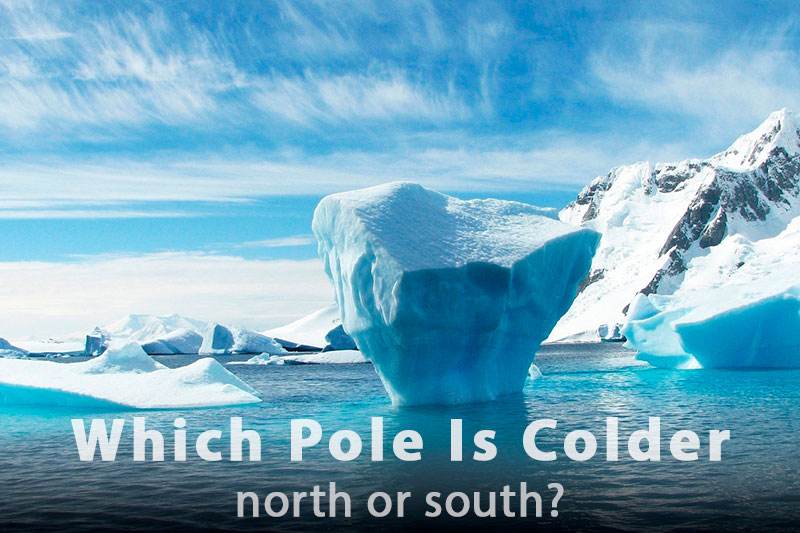North and south have long been associated with cold and heat. People living in the northern part of our planet believe the more to the north you go, the colder it is there, while the south means more warmth. But is it the case for the North and South Poles? Which of them is really colder? Let's find answers to these questions and understand the reasons using facts of accurate science.

The average winter temperature is minus 40 degrees Celsius at the North Pole and minus 58 °C at the South Pole. So the South Pole is a lot colder.
The lowest temperature ever detected on Earth was at the South Pole. It was minus 89.2 degrees Celsius.
The South Pole is far from the ocean, which acts as a heat reservoir. Plus, it is very high—at about 2,800 meters above sea level.
Let's begin with finding out which of the poles is colder and how colder it is. The first thing to know here is that the South Pole is the cold pole. In 1983, Soviet Vostok Research Station fixed a temperature of minus 89.2 degrees Celsius out there!
At the North Pole, thermometers go down to minus 26–43 °C in winter, while the average temperature is roughly minus 40 °C. Not so hot, right?! But at the South Pole, it is even lower: the average winter temperature there (from June to August, given it's the southern hemisphere) is minus 58 °C.
In summer, the picture is much brighter. The temperature goes up 0 degrees Celsius at the North Pole, reaching 2–5 ºC on very warm days. As for the South Pole, it's noticeably worse: in December 2011, the air got heated only up to minus 12 degrees Celsius. But usually, it is even colder. So, it's safe to say: although the North Pole is a cold place, it is nothing but a resort compared to the South Pole!
The most obvious and expected reason is elevation. Most of the Arctic is almost as high as the sea level; it basically makes up one massive glacier, slightly rising above the ocean surface—by 2–3 meters, and even less in summer. In contrast, Antarctica is a whole continent covered with a huge layer of ice about 2,800 meters thick! So the higher it goes, the colder it is. However, this is only one of the reasons.
The sea is worth special mention. The North Pole is surrounded by ocean from all sides, being an excellent heat accumulator. Thanks to water currents, the heat spreads evenly so that the ocean can give at least some warmth to the air around the Arctic. By contrast, things are absolutely different at the South Pole. As it is hundreds of kilometers away from the sea, local air masses hardly impact its climate, thus failing to warm up the cold air.
The general climate plays a major role. The South Pole is so much colder because of the strong winds. Antarctic winds are very strong; they stop warmer air from mixing with the polar air. On the other hand, Arctic winds are not as strong, and warmer air from the mid-latitudes is able to mix with polar air, making the North warmer.
References: Links and sources